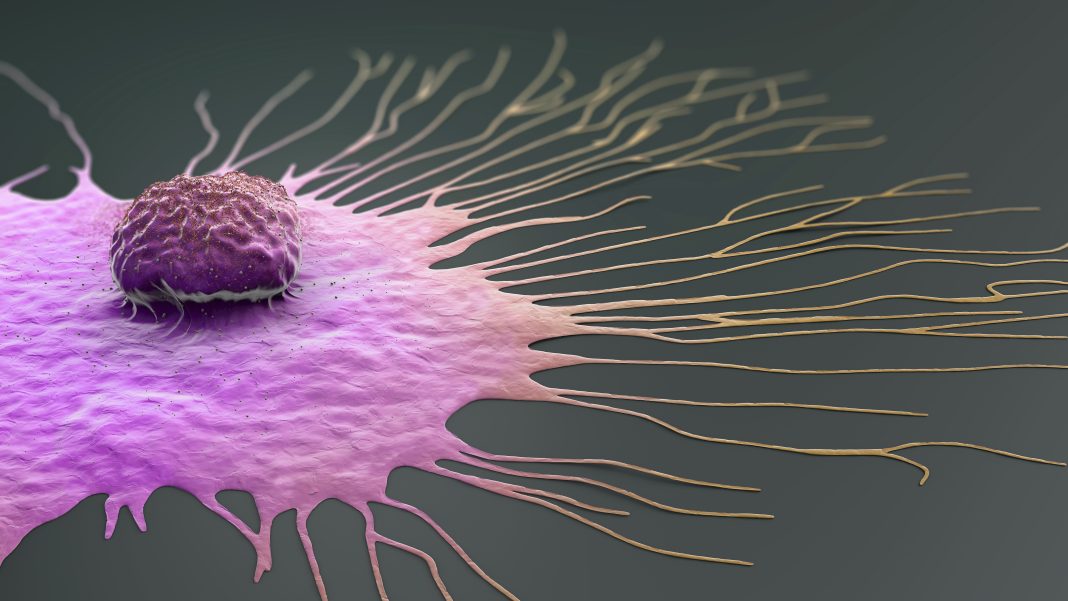Researchers at the University of Sheffield, U.K., have discovered breast cancer cells ingest and consume the matrix surrounding them to overcome starvation. The findings reveal a previously unknown mechanism of cancer cell survival, and may offer a new target for therapy development.
The findings were published in PLoS Biology in an article titled, “The extracellular matrix supports breast cancer cell growth under amino acid starvation by promoting tyrosine catabolism,” and led by Elena Rainero, PhD, a lecturer at the University of Sheffield.
Cells in the breast, including tumor cells, are embedded in a meshwork called the extracellular matrix (ECM). Nutrients are scarce in the ECM, due to limited blood flow, and become even scarcer as tumor cells grow.
The researchers sought to determine how tumor cells supply themselves with the raw materials to support that growth. They seeded breast adenocarcinoma cells into either collagen or a commercial matrix preparation, or onto plastic, with or without certain critical amino acids.
Next, by fluorescently labeling the collagen and watching its journey through the cell, the researchers showed that the cells took up the ECM and broke it down in lysosomes; when the ECM was chemically treated to cross-link its components, the cells were unable to ingest it. Further investigation indicated that uptake was through an ingestion process called macropinocytosis, in which the cell engulfs large quantities of extracellular material.
“Our results indicate that breast cancer cells take advantage of nutrients in the extracellular matrix in times of nutrient starvation, and that this process depends on both macropinocytosis and metabolic conversion of key amino acids to energy-releasing substrates,” Rainero said. “HPDL-mediated metabolism of tyrosine and phenylalanine could represent a metabolic vulnerability of cancer cells thriving in a nutrient deprived microenvironment.”
The authors added: “This study identified a novel mechanism employed by breast cancer cells to survive in the challenging environment they are in within tumors. As sources of food are scarce, cancer cells gain the ability to eat and digest components of the matrix around them. Here we have identified a key metabolic process that the cells need to be able to take advantage of the matrix, which could represent a novel therapeutic target.”


